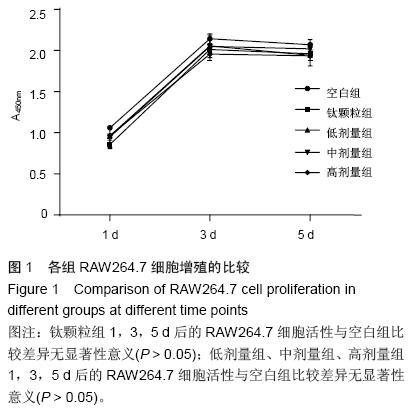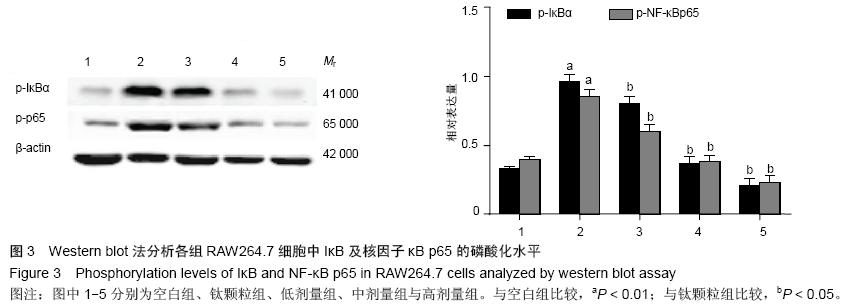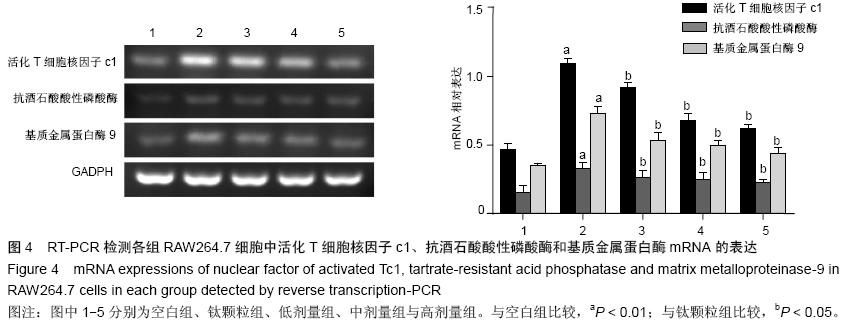| [1] Shin DK,Kim MH,Lee SH,et al.Inhibitory effects of luteolin on titanium particle-induced osteolysis in a mouse model.Acta Biomater.2012;8(9):3524-3531.[2] Lubbeke A,Garavaglia G,Rothman KJ,et al.Statins may reduce femoral osteolysis in patients with total Hip arthroplasty.J Orthop Res.2013;31(5):814-820.[3] Goodman SB,Ma T.Cellular chemotaxis induced by wear particles from joint replacements. Biomaterials. 2010;31(19):5045-5050.[4] Takayanagi H.Osteoimmunology: shared mechanisms and crosstalk between the immune and bone systems.Nat Rev Immunol.2007;7(4):292-304.[5] Leibbrandt A,Penninger JM.RANKL/RANK as key factors for osteoclast development and bone loss in arthropathies.Adv Exp Med Biol. 2009;649(10): 100-113.[6] Nakashima T,Takayanagi H.New regulation mechanisms of osteoclast differentiation. Ann N Y Acad Sci.2011;1240(4):E13-18.[7] Asagiri M,Takayanagi H.The molecular understanding of osteoclast differentiation. Bone.2007;40(2):251-264.[8] 国家药典委员会.中华人民共和国药典2010第一部[M].北京:中国医药科技出版社, 2010:87.[9] Jean-Gilles D,Li L,Vaidyanathan VG,et al.Inhibitory effects of polyphenol punicalagin on type-II collagen degradation in vitro and inflammation in vivo.Chem Biol Interact.2013;205(2):90-99.[10] Dalal A,Pawar V,McAllister K,et al.Orthopedic implant cobalt-alloy particles produce greater toxicity and inflammatory cytokines than titanium alloy and zirconium alloy-based particles in vitro, in human osteoblasts, fibroblasts, and macrophages. J Biomed Mater Res A.2012;100(8):2147-2158.[11] Del BA,Denaro V,Maffulli N.Genetic susceptibility to aseptic loosening following total hip arthroplasty: a systematic review.Br Med Bull.2012;101(9):39-55.[12] Greenfield EM,Bechtold J.What other biologic and mechanical factors might contribute to osteolysis.J Am Acad Orthop Surg 2008;16(1/2):56-62.[13] Haynes DR,Crotti TN,Zreiqat H.Regulation of osteoclast activity in peri-implant tissues. Biomaterials. 2004;25(20):4877-4885.[14] Billi F,Campbell P.Nanotoxicology of metal wear particles in total joint arthroplasty: a review of current concepts.J Appl Biomater Biomech.2010;8(1):1-6.[15] Zhang YF,Zheng YF,Qin L.A comprehensive biological evaluation of ceramic nanoparticles as wear debris. Nanomedicine.2011;7(6):975-982.[16] Fulin P,Pokorny D,Slouf M,et al. MORF method for assessment of the size and shape of UHMWPE wear microparticles and nanoparticles in periprosthetic tissues. Acta Chir Orthop Traumatol Cech. 2011;78(2): 131-137.[17] 王俊,朱旭日,张超,等.中药淫羊藿苷干预人工关节磨损微粒诱导的骨溶解[J].中国组织工程研究, 2014,18(17): 2625-2631.[18] Sun SG,Ma BA,Zhou Y,et al.Effects of bone cement particles on the function of pseudocapsule-derived fibroblasts.Acta Orthop.2006;77(2):320-328. [19] Goodman SB,Ma T.Cellular chemotaxis induced by wear particles from joint replacements.Biomaterials. 2010;31(19):5045-5050.[20] Geng D,Xu Y,Yang H,et al. Protection against titanium particle induced osteolysis by cannabinoid receptor 2 selective antagonist.Biomaterials. 2010;31(8): 1996-2000.[21] Wang Y,Zhang H,Liang H,et al.Purification, antioxidant activity and protein-precipitating capacity of punicalin from pomegranate husk.Food Chem. 2013;138(1): 437-443.[22] Lee SI,Kim BS,Kim KS,et al.Immune-suppressive activity of punicalagin via inhibition of NFAT activation.Biochem Biophys Res Commun. 2008;371 (4):799-803.[23] Ramage SC,Urban NH,Jiranek WA,et al.Expression of RANKL in osteolytic membranes: association with fibroblastic cell markers.J Bone Joint Surg Am. 2007; 89(4):841-848.[24] Childs LM,Paschalis EP,Xing L,et al.In vivo RANK signaling blockade using the receptor activator of NF-kappaB:Fc effectively prevents and ameliorates wear debris-induced osteolysis via osteoclast depletion without inhibiting osteogenesis. J Bone Miner Res.2002;17(2):192-199.[25] Takayanagi H,Kim S,Koga T,et al.Induction and activation of the transcription factor NFATc1 (NFAT2) integrate RANKL signaling in terminal differentiation of osteoclasts.Dev Cell.2002;3(6):889-901.[26] 朱世军,徐耀增,崔京福,等.锶离子对钛颗粒诱导破骨细胞活化的作用[J].中华实验外科杂志, 2014,31(7):1399- 1401.[27] Xu X,Yin P,Wan C,et al.Punicalagin inhibits inflammation in LPS-induced RAW264.7 macrophages via the suppression of TLR4-mediated MAPKs and NF-kappaB activation. Inflammation 2014;37(3): 956-965.[28] Jean-Gilles D,Li L,Vaidyanathan VG,et al.Inhibitory effects of polyphenol punicalagin on type-II collagen degradation in vitro and inflammation in vivo.Chem Biol Interact.2013;205(2):90-99.[29] Kim YH,Choi EM.Stimulation of osteoblastic differentiation and inhibition of interleukin-6 and nitric oxide in MC3T3-E1 cells by pomegranate ethanol extract. Phytother Res.2009;23(5):737-739.[30] Cerda B,Llorach R,Ceron JJ,et al. Evaluation of the bioavailability and metabolism in the rat of punicalagin, an antioxidant polyphenol from pomegranate juice. Eur J Nutr. 2003;42(1):18-28. |
.jpg)




.jpg)
.jpg)